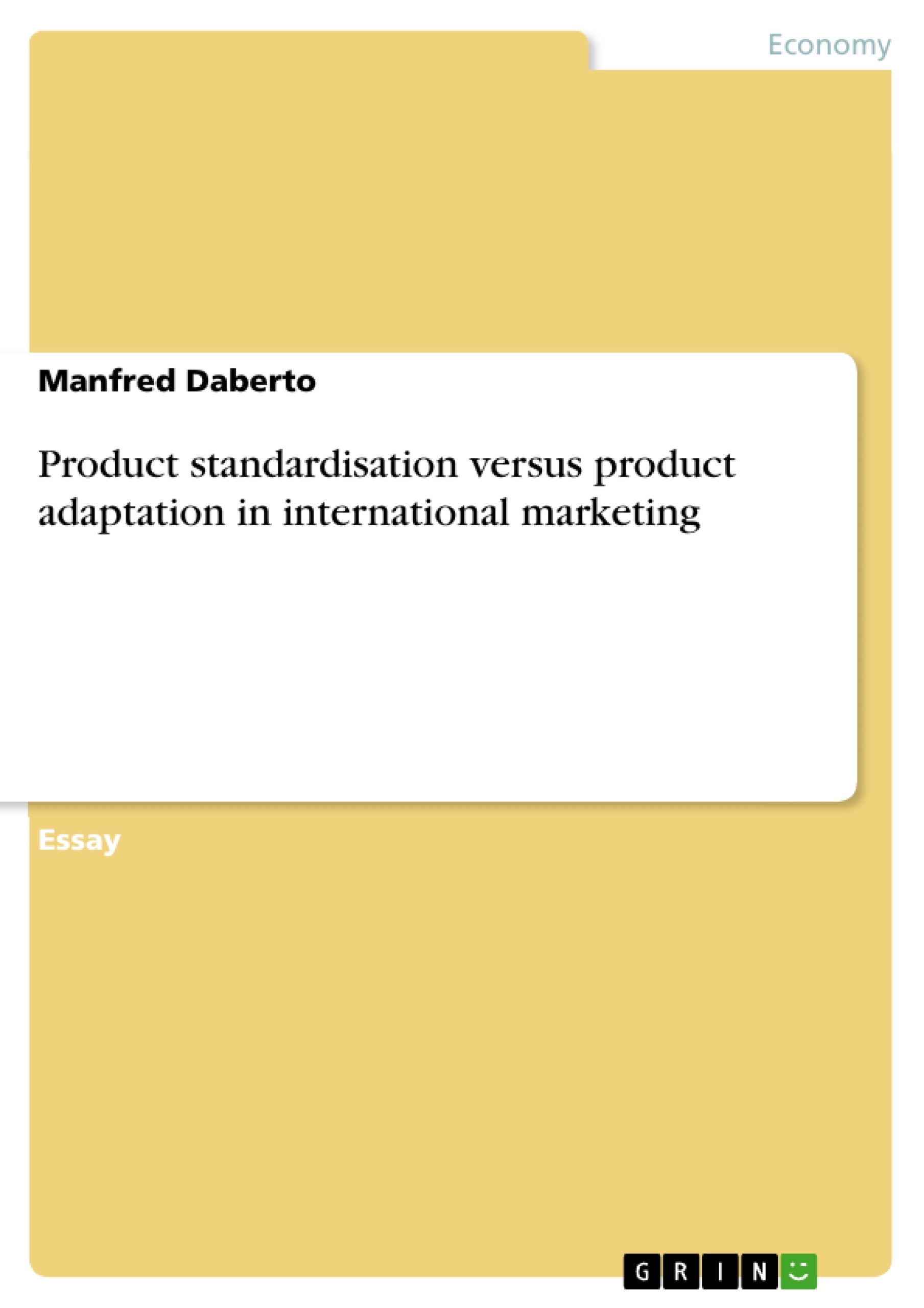The core of a firm’s international operations is a product or service. This can be defined as the complex of tangible and intangible elements that distinguishes it from the other entities in the marketplace (Czinkota, Rinkainen, 1995: 262). Product can be defined as: “it’s a bundle of satisfactions (or utilities) the buyer receives. This includes its form, taste, colour, odour and texture; how it functions in use; the package; the label; the warranty; manufacturer’s and retailer’s servicing; the confidence or prestige enjoyed by the brand; the manufacturer’s reputation; the country of origin; and any other symbolic utility received from the possession or use of the goods” (Cateora, Graham, 1999: 355-356). The success of the firm depends on how it’s possible to differentiate from other competitors. But the key factors of success can vary from one country to another country. Therefore for the firm it is important to choose the right strategy between the product adaptation and product standardisation. Product adaptation means that the firm adapts the product to the local markets. It is the process of modifying products for different countries and regions or designing new products for foreign markets. Product standardisation means that the firm sells and advertises a standardized product in the international context. But which strategy is the better one? In the following the author wants to explain the different advantages and disadvantages and work out, which strategy is the best for certain situations because it depends on the situation which strategy is better.
Table of Contents
- Introduction
- Standardisation
- Adaptation
- Factors affecting adaptation
Objectives and Key Themes
This paper explores the strategic choices of product standardisation versus product adaptation in international marketing. It aims to provide a comprehensive overview of the advantages and disadvantages of each approach, identifying key factors that influence decision-making in global market entry.
- The role of product in international marketing
- Advantages and disadvantages of product standardisation
- Advantages and disadvantages of product adaptation
- Factors influencing the choice between standardisation and adaptation
- The impact of cultural differences on product marketing
Chapter Summaries
- Introduction: The paper introduces the concept of product standardisation and adaptation in international marketing. It defines product as a bundle of satisfactions and emphasises the importance of differentiation in a competitive market. Different product types are introduced, ranging from local to global products.
- Standardisation: This section highlights the advantages of product standardisation, including economies of scale in production, marketing, and research and development. It also explores the role of technology and global competition in driving standardisation strategies. The increasing importance of standardised quality is also discussed, particularly through the lens of international quality management tools like ISO 9000.
- Adaptation: This section focuses on the rationale behind product adaptation. It argues that adapting products to local markets can lead to greater customer satisfaction and acceptance. The section explores factors influencing adaptation decisions, such as differing use conditions, government regulations, consumer behaviour patterns, and local competition. The impact of economic situations and the need for product simplification in low-income markets are also discussed.
Keywords
This paper focuses on the key concepts of product standardisation, product adaptation, international marketing, global market entry, cultural differences, consumer behaviour, and the importance of quality assurance in a globalised market. It explores the advantages and disadvantages of both standardisation and adaptation strategies, providing a framework for making informed decisions in international product marketing.
- Quote paper
- Manfred Daberto (Author), 2003, Product standardisation versus product adaptation in international marketing, Munich, GRIN Verlag, https://www.grin.com/document/85969




